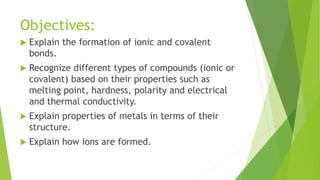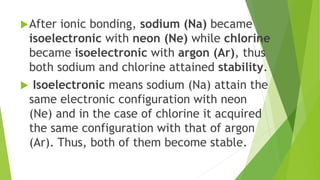The document discusses chemical bonding and provides a pre-assessment to test the reader's understanding. It explains that ionic bonding occurs through the complete transfer of electrons between a metal and non-metal, forming ions. Covalent bonding is formed by the sharing of electron pairs between non-metals. Metals bond through metallic bonding where free-floating electrons are attracted to stationary positive ions. The document aims to help readers understand how different types of bonds are formed and the properties they produce.



































